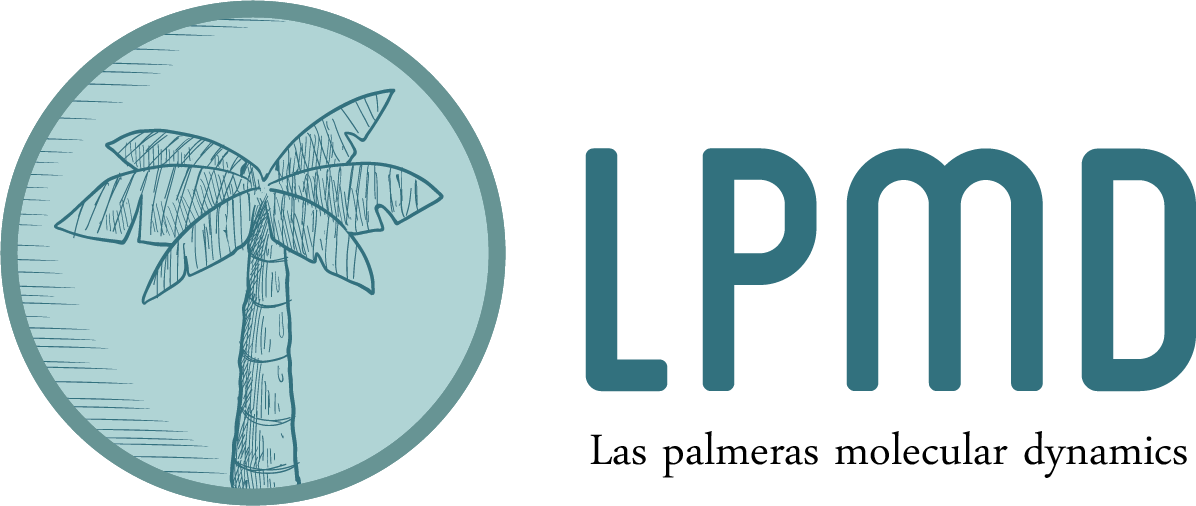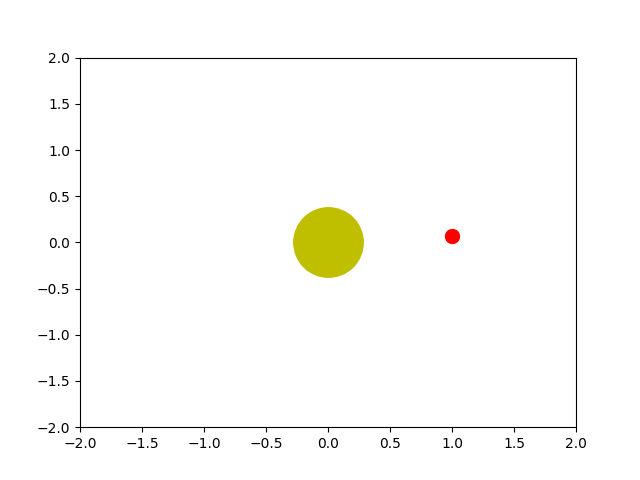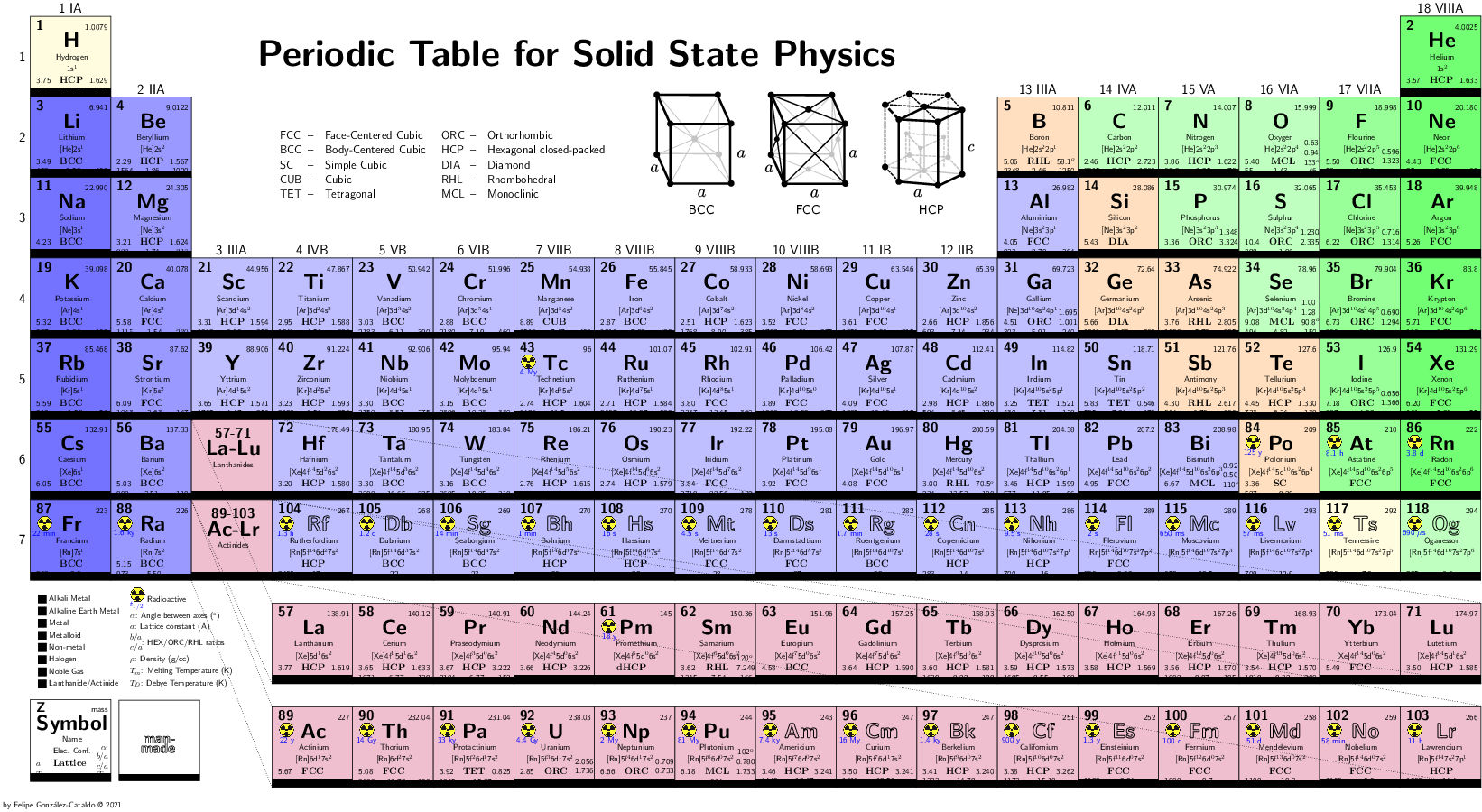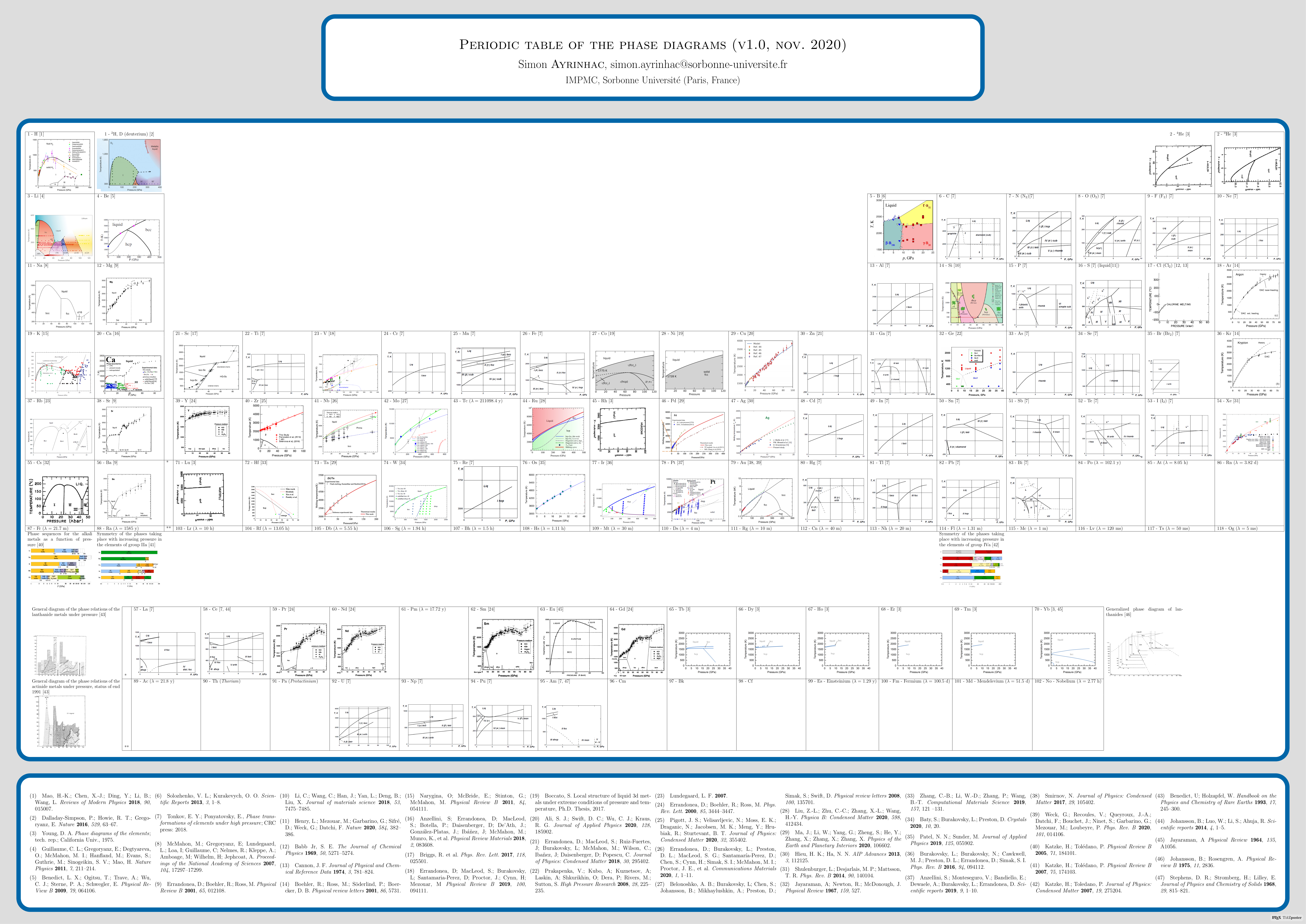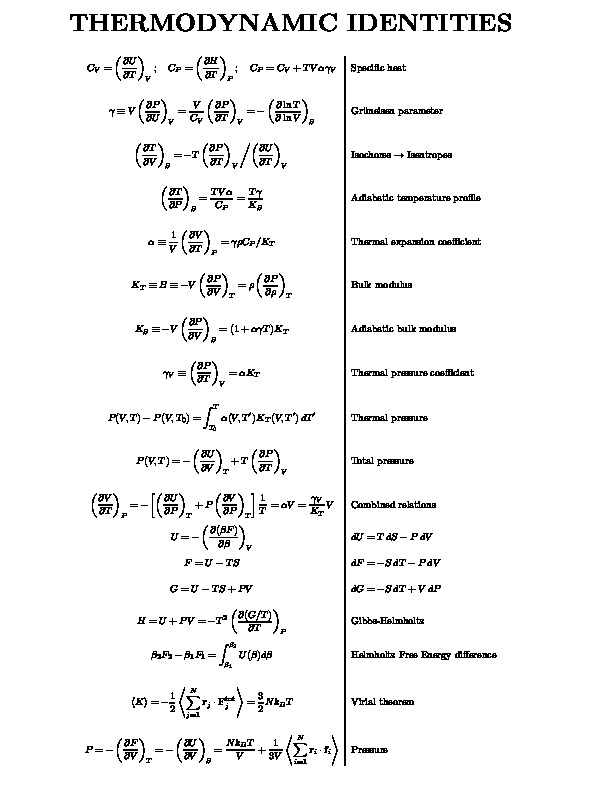Programas
#!/usr/bin/python
#***********************************************************************#
#* SUN - EARTH ORBIT *#
#* *#
#* This program solves the differential equation *#
#* m R''(t) = - GMm/r^2 r^ *#
#* where R=(x,y) and r^ = (x,y)/sqrt(x^2+y^2) using Runge-Kutta *#
#* methods. *#
#* *#
#***********************************************************************#
# AUTHOR: FELIPE GONZALEZ CATALDO, September 2018.
from pylab import *
# -*- coding: utf-8 -*-
G=0.00011859645 # in AU^3/(earthmass*year^2)
m=1.00 # earthmass
M=332946.05 # sunmass=332946.05 earthmass
tau=0.01; tmax=5 # year
def f1(r,v,t): return v
def f2(r,v,t): return -G*M*r/norm(r)**3
def RK3(r,v,t):
k11 = tau*f1(r,v,t)
k12 = tau*f2(r,v,t)
k21 = tau*f1(r+0.5*k11, v+0.5*k12, t+0.5*tau)
k22 = tau*f2(r+0.5*k11, v+0.5*k12, t+0.5*tau)
k31 = tau*f1(r-k11+2*k21, v-k12+2*k22, t+0.5*tau)
k32 = tau*f2(r-k11+2*k21, v-k12+2*k22, t+0.5*tau)
r = r + (k11+4*k21+k31)/6.0
v = v + (k12+4*k22+k32)/6.0
return r,v
def KineticEnergy(r,v):
return 0.5*m*norm(v)**2 # in earthmass*(AU/year)^2
def PotentialEnergy(r,v):
return -G*M*m/norm(r) # in earthmass*(AU/year)^2
#-------------------#
# ANIMATION #
#-------------------#
fig = figure(1)
ax = subplot(111)
xlim(-2,2)
ylim(-2,2)
sun, = ax.plot([0],[0], 'oy',ms=50)
planet, = ax.plot([0],[0], 'or',ms=10)
trajectory, = ax.plot([0],[0],'--')
show(block=False)
#-------------------#
# MAIN PROGRAM #
#-------------------#
t=0; r = np.array([1.0,0.0]); v = np.array([0,7.28]) # Initial conditions
for t in arange(0,tmax,tau):
r,v = RK3(r,v,t)
planet.set_xdata( r[0] )
planet.set_ydata( r[1] )
plt.pause(1e-30)
draw()
# Print the relevant data
K = KineticEnergy(r,v)
P = PotentialEnergy(r,v)
print "t[year]= %2.4f x[AU]= %8.4f y[AU]= %8.4f vx[AU/year]= %8.4f vy[AU/year]= %8.4f Kin[ME*(AU/year)^2]= %8.4f Pot[ME*(AU/year)^2]= %8.4f" % (t,r[0],r[1],v[0],v[1], K,P)
legend([planet],[r'$t=$'+str(t)], numpoints=1)
#savefig('Energies-vs-Time.png')
Kepler Orbits
A planet of mass around the sun follows the orbit dictated by Newton's law of gravity
Since , we obtain the differential equation
In cartesian coordinates, , and the equation above gives rise to two second-order differential equations:
Using the notation ,
,
,
, we can split the equations above into four first-order, coupled differential equations:
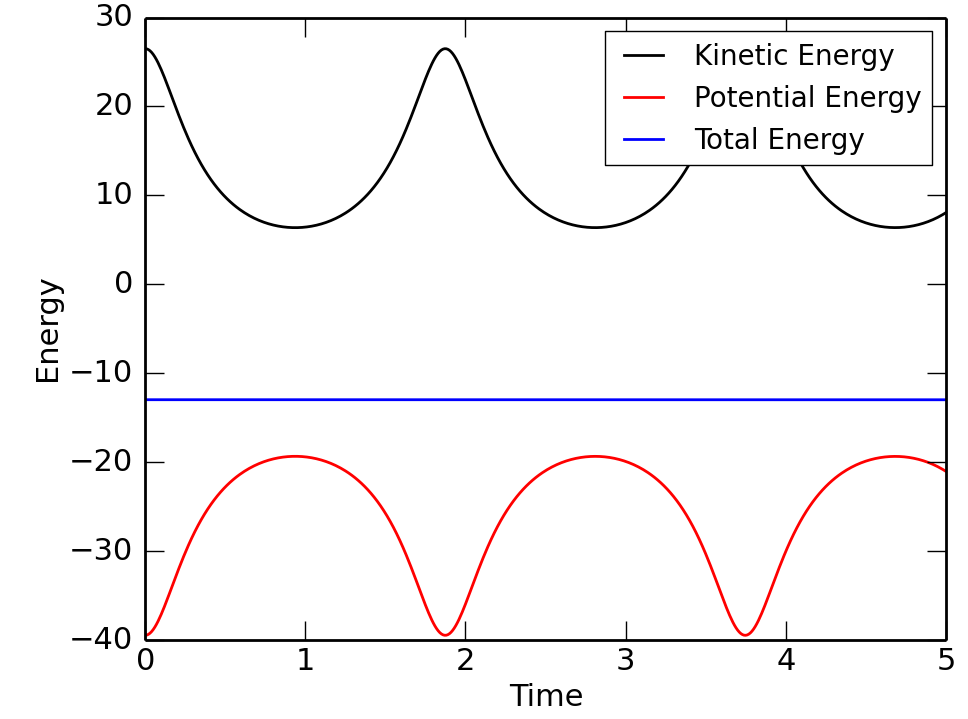 |
INDEX
Code (C++)
//
// This program solves the differential equation
// m R''(t) = - GMm/r² r^
// where R=(x,y) and r^ = (x,y)/sqrt(x²+y²)
// using Runge-Kutta methods.
#include<iostream>
#include<fstream>
#include<cmath>
using namespace std;
const double G=0.00011859645; // in AU³/(earthmass*year²)
const double m=1; // earthmass
const double M=332946.05; // sunmass=332946.05 earthmass
const double tau=0.01, tmax=5; // year
typedef struct vect{
double x, y, z;
} Vector;
// We separate the 2nd order vector equation in 4 first-order differential equations:
// x1(t) = x(t)
// y1(t) = y(t)
// x2(t) = x'(t)
// y2(t) = y'(t)
double fx1(double x1, double x2, double y1, double y2, double t){ return x2; } // x1'(t) = x2(t) = fx1(x1,x2,y1,y2,t)
double fy1(double x1, double x2, double y1, double y2, double t){ return y2; } // y1'(t) = y2(t) = fx2(x1,x2,y1,y2,t)
double fx2(double x1, double x2, double y1, double y2, double t)
{
return -G*M*x1/pow(x1*x1+y1*y1,1.5); // x2'(t) = -G*M*x1/R³ = fy1(x1,x2,y1,y2,t)
}
double fy2(double x1, double x2, double y1, double y2, double t)
{
return -G*M*y1/pow(x1*x1+y1*y1,1.5); // y2'(t) = -G*M*y1/R³ = fy1(x1,x2,y1,y2,t)
}
Vector RungeLenz(double x, double y, double vx, double vy)
{
double r=sqrt(x*x+y*y);
double px=m*vx, py=m*vy;
double Lz=x*py-y*px;
Vector A;
A.x = Lz*py-m*(G*M*m)*x/r;
A.y = -Lz*px-m*(G*M*m)*y/r;
return A;
}
///////////////////////////////
// METHODS //
///////////////////////////////
// Runge-Kutta first order
void RK1(double &x1, double &x2, double &y1, double &y2, double &t)
{
double k1x1, k1x2, k1y1, k1y2;
k1x1 = tau*fx1(x1,x2,y1,y2,t);
k1x2 = tau*fx2(x1,x2,y1,y2,t);
k1y1 = tau*fy1(x1,x2,y1,y2,t);
k1y2 = tau*fy2(x1,x2,y1,y2,t);
x1 = x1 + k1x1;
x2 = x2 + k1x2;
y1 = y1 + k1y1;
y2 = y2 + k1y2;
}
// Runge-Kutta de second order
void RK2(double &x1, double &x2, double &y1, double &y2, double &t)
{
double k1x1, k1x2, k1y1, k1y2;
double k2x1, k2x2, k2y1, k2y2;
k1x1 = tau*fx1(x1,x2,y1,y2,t);
k1x2 = tau*fx2(x1,x2,y1,y2,t);
k1y1 = tau*fy1(x1,x2,y1,y2,t);
k1y2 = tau*fy2(x1,x2,y1,y2,t);
k2x1 = tau*fx1(x1+k1x1,x2+k1x2,y1+k1y1,y2+k1y2,t);
k2x2 = tau*fx2(x1+k1x1,x2+k1x2,y1+k1y1,y2+k1y2,t);
k2y1 = tau*fy1(x1+k1x1,x2+k1x2,y1+k1y1,y2+k1y2,t);
k2y2 = tau*fy2(x1+k1x1,x2+k1x2,y1+k1y1,y2+k1y2,t);
x1 = x1 + 0.5*(k1x1+k2x1);
x2 = x2 + 0.5*(k1x2+k2x2);
y1 = y1 + 0.5*(k1y1+k2y1);
y2 = y2 + 0.5*(k1y2+k2y2);
}
// Runge-Kutta third order
void RK3(double &x1, double &x2, double &y1, double &y2, double &t)
{
double k1x1, k1x2, k1y1, k1y2;
double k2x1, k2x2, k2y1, k2y2;
double k3x1, k3x2, k3y1, k3y2;
k1x1 = tau*fx1(x1,x2,y1,y2,t);
k1x2 = tau*fx2(x1,x2,y1,y2,t);
k1y1 = tau*fy1(x1,x2,y1,y2,t);
k1y2 = tau*fy2(x1,x2,y1,y2,t);
k2x1 = tau*fx1(x1+0.5*k1x1, x2+0.5*k1x2, y1+0.5*k1y1, y2+0.5*k1y2, t+0.5*tau);
k2x2 = tau*fx2(x1+0.5*k1x1, x2+0.5*k1x2, y1+0.5*k1y1, y2+0.5*k1y2, t+0.5*tau);
k2y1 = tau*fy1(x1+0.5*k1x1, x2+0.5*k1x2, y1+0.5*k1y1, y2+0.5*k1y2, t+0.5*tau);
k2y2 = tau*fy2(x1+0.5*k1x1, x2+0.5*k1x2, y1+0.5*k1y1, y2+0.5*k1y2, t+0.5*tau);
k3x1 = tau*fx1(x1-k1x1+2*k2x1, x2-k1x2+2*k2x2, y1-k1y1+2*k2y1, y2-k1y2+2*k2y2, t+tau);
k3x2 = tau*fx2(x1-k1x1+2*k2x1, x2-k1x2+2*k2x2, y1-k1y1+2*k2y1, y2-k1y2+2*k2y2, t+tau);
k3y1 = tau*fy1(x1-k1x1+2*k2x1, x2-k1x2+2*k2x2, y1-k1y1+2*k2y1, y2-k1y2+2*k2y2, t+tau);
k3y2 = tau*fy2(x1-k1x1+2*k2x1, x2-k1x2+2*k2x2, y1-k1y1+2*k2y1, y2-k1y2+2*k2y2, t+tau);
x1 = x1 +(k1x1+4*k2x1+k3x1)/6.0;
x2 = x2 +(k1x2+4*k2x2+k3x2)/6.0;
y1 = y1 +(k1y1+4*k2y1+k3y1)/6.0;
y2 = y2 +(k1y2+4*k2y2+k3y2)/6.0;
}
double KineticEnergy(double x1, double x2, double y1, double y2, double t)
{
return 0.5*m*(x2*x2+y2*y2); // in earthmass*(AU/year)²
}
double PotentialEnergy(double x1, double x2, double y1, double y2, double t)
{
return -G*M*m/sqrt(x1*x1+y1*y1); // in earthmass*(AU/year)²
}
int main()
{
double x1, x2, y1, y2, t; // x1= x, x2=vx, y1=y, y2=vy
ofstream archivo("sol-tierraRK1.dat");
for(x1=5, x2=0, y1=0, y2=5, t=0; t<tmax; t+=tau)
{
archivo << t << " " << x1 << " " << x2 << " " << y1 << " " << y2 << endl;
RK1(x1,x2,y1,y2,t);
}
archivo.close();
ofstream archivo2("sol-tierraRK2.dat");
for(x1=5, x2=0, y1=0, y2=5, t=0; t<tmax; t+=tau)
{
archivo2 << t << " " << x1 << " " << x2 << " " << y1 << " " << y2 << endl;
RK2(x1,x2,y1,y2,t);
}
archivo2.close();
ofstream archivo3("sol-tierraRK3.dat");
ofstream prop("props.dat");
//cout << "set terminal " << endl; //wxt size 600,600" << endl; // FIX WINDOW SIZE FOR GNUPLOT
double A1, A2;
for(x1=1, x2=0, y1=0, y2=7.28, t=0; t<tmax; t+=tau)
{
archivo3 << t << " " << x1 << " " << x2 << " " << y1 << " " << y2 << endl;
A1 = RungeLenz(x1,y1,x2,y2).x;
A2 = RungeLenz(x1,y1,x2,y2).y;
prop << t << " " << KineticEnergy(x1,x2,y1,y2,t) << " " << PotentialEnergy(x1,x2,y1,y2,t) << " " << A1 << " " << A2 << endl;
// cout<<"plot [-2:2][-2:2] sqrt(1-x**2) lc 1 t 'Circulo', -sqrt(1-x**2) lc 1 notitle, '-' ls 7 lc 6 ps 8 t 'Sol', '-' ls 7 lc 3 ps 2 t 'Tierra'" << endl;
// cout << 0 << " "<< 0 << endl <<'e'<< endl ;
// cout << x1 << " "<< y1 << endl <<'e'<< endl << flush;
RK3(x1,x2,y1,y2,t);
}
archivo3.close();
prop.close();
return 0;
}
// This program solves the differential equation
// m R''(t) = - GMm/r² r^
// where R=(x,y) and r^ = (x,y)/sqrt(x²+y²)
// using Runge-Kutta methods.
#include<iostream>
#include<fstream>
#include<cmath>
using namespace std;
const double G=0.00011859645; // in AU³/(earthmass*year²)
const double m=1; // earthmass
const double M=332946.05; // sunmass=332946.05 earthmass
const double tau=0.01, tmax=5; // year
typedef struct vect{
double x, y, z;
} Vector;
// We separate the 2nd order vector equation in 4 first-order differential equations:
// x1(t) = x(t)
// y1(t) = y(t)
// x2(t) = x'(t)
// y2(t) = y'(t)
double fx1(double x1, double x2, double y1, double y2, double t){ return x2; } // x1'(t) = x2(t) = fx1(x1,x2,y1,y2,t)
double fy1(double x1, double x2, double y1, double y2, double t){ return y2; } // y1'(t) = y2(t) = fx2(x1,x2,y1,y2,t)
double fx2(double x1, double x2, double y1, double y2, double t)
{
return -G*M*x1/pow(x1*x1+y1*y1,1.5); // x2'(t) = -G*M*x1/R³ = fy1(x1,x2,y1,y2,t)
}
double fy2(double x1, double x2, double y1, double y2, double t)
{
return -G*M*y1/pow(x1*x1+y1*y1,1.5); // y2'(t) = -G*M*y1/R³ = fy1(x1,x2,y1,y2,t)
}
Vector RungeLenz(double x, double y, double vx, double vy)
{
double r=sqrt(x*x+y*y);
double px=m*vx, py=m*vy;
double Lz=x*py-y*px;
Vector A;
A.x = Lz*py-m*(G*M*m)*x/r;
A.y = -Lz*px-m*(G*M*m)*y/r;
return A;
}
///////////////////////////////
// METHODS //
///////////////////////////////
// Runge-Kutta first order
void RK1(double &x1, double &x2, double &y1, double &y2, double &t)
{
double k1x1, k1x2, k1y1, k1y2;
k1x1 = tau*fx1(x1,x2,y1,y2,t);
k1x2 = tau*fx2(x1,x2,y1,y2,t);
k1y1 = tau*fy1(x1,x2,y1,y2,t);
k1y2 = tau*fy2(x1,x2,y1,y2,t);
x1 = x1 + k1x1;
x2 = x2 + k1x2;
y1 = y1 + k1y1;
y2 = y2 + k1y2;
}
// Runge-Kutta de second order
void RK2(double &x1, double &x2, double &y1, double &y2, double &t)
{
double k1x1, k1x2, k1y1, k1y2;
double k2x1, k2x2, k2y1, k2y2;
k1x1 = tau*fx1(x1,x2,y1,y2,t);
k1x2 = tau*fx2(x1,x2,y1,y2,t);
k1y1 = tau*fy1(x1,x2,y1,y2,t);
k1y2 = tau*fy2(x1,x2,y1,y2,t);
k2x1 = tau*fx1(x1+k1x1,x2+k1x2,y1+k1y1,y2+k1y2,t);
k2x2 = tau*fx2(x1+k1x1,x2+k1x2,y1+k1y1,y2+k1y2,t);
k2y1 = tau*fy1(x1+k1x1,x2+k1x2,y1+k1y1,y2+k1y2,t);
k2y2 = tau*fy2(x1+k1x1,x2+k1x2,y1+k1y1,y2+k1y2,t);
x1 = x1 + 0.5*(k1x1+k2x1);
x2 = x2 + 0.5*(k1x2+k2x2);
y1 = y1 + 0.5*(k1y1+k2y1);
y2 = y2 + 0.5*(k1y2+k2y2);
}
// Runge-Kutta third order
void RK3(double &x1, double &x2, double &y1, double &y2, double &t)
{
double k1x1, k1x2, k1y1, k1y2;
double k2x1, k2x2, k2y1, k2y2;
double k3x1, k3x2, k3y1, k3y2;
k1x1 = tau*fx1(x1,x2,y1,y2,t);
k1x2 = tau*fx2(x1,x2,y1,y2,t);
k1y1 = tau*fy1(x1,x2,y1,y2,t);
k1y2 = tau*fy2(x1,x2,y1,y2,t);
k2x1 = tau*fx1(x1+0.5*k1x1, x2+0.5*k1x2, y1+0.5*k1y1, y2+0.5*k1y2, t+0.5*tau);
k2x2 = tau*fx2(x1+0.5*k1x1, x2+0.5*k1x2, y1+0.5*k1y1, y2+0.5*k1y2, t+0.5*tau);
k2y1 = tau*fy1(x1+0.5*k1x1, x2+0.5*k1x2, y1+0.5*k1y1, y2+0.5*k1y2, t+0.5*tau);
k2y2 = tau*fy2(x1+0.5*k1x1, x2+0.5*k1x2, y1+0.5*k1y1, y2+0.5*k1y2, t+0.5*tau);
k3x1 = tau*fx1(x1-k1x1+2*k2x1, x2-k1x2+2*k2x2, y1-k1y1+2*k2y1, y2-k1y2+2*k2y2, t+tau);
k3x2 = tau*fx2(x1-k1x1+2*k2x1, x2-k1x2+2*k2x2, y1-k1y1+2*k2y1, y2-k1y2+2*k2y2, t+tau);
k3y1 = tau*fy1(x1-k1x1+2*k2x1, x2-k1x2+2*k2x2, y1-k1y1+2*k2y1, y2-k1y2+2*k2y2, t+tau);
k3y2 = tau*fy2(x1-k1x1+2*k2x1, x2-k1x2+2*k2x2, y1-k1y1+2*k2y1, y2-k1y2+2*k2y2, t+tau);
x1 = x1 +(k1x1+4*k2x1+k3x1)/6.0;
x2 = x2 +(k1x2+4*k2x2+k3x2)/6.0;
y1 = y1 +(k1y1+4*k2y1+k3y1)/6.0;
y2 = y2 +(k1y2+4*k2y2+k3y2)/6.0;
}
double KineticEnergy(double x1, double x2, double y1, double y2, double t)
{
return 0.5*m*(x2*x2+y2*y2); // in earthmass*(AU/year)²
}
double PotentialEnergy(double x1, double x2, double y1, double y2, double t)
{
return -G*M*m/sqrt(x1*x1+y1*y1); // in earthmass*(AU/year)²
}
int main()
{
double x1, x2, y1, y2, t; // x1= x, x2=vx, y1=y, y2=vy
ofstream archivo("sol-tierraRK1.dat");
for(x1=5, x2=0, y1=0, y2=5, t=0; t<tmax; t+=tau)
{
archivo << t << " " << x1 << " " << x2 << " " << y1 << " " << y2 << endl;
RK1(x1,x2,y1,y2,t);
}
archivo.close();
ofstream archivo2("sol-tierraRK2.dat");
for(x1=5, x2=0, y1=0, y2=5, t=0; t<tmax; t+=tau)
{
archivo2 << t << " " << x1 << " " << x2 << " " << y1 << " " << y2 << endl;
RK2(x1,x2,y1,y2,t);
}
archivo2.close();
ofstream archivo3("sol-tierraRK3.dat");
ofstream prop("props.dat");
//cout << "set terminal " << endl; //wxt size 600,600" << endl; // FIX WINDOW SIZE FOR GNUPLOT
double A1, A2;
for(x1=1, x2=0, y1=0, y2=7.28, t=0; t<tmax; t+=tau)
{
archivo3 << t << " " << x1 << " " << x2 << " " << y1 << " " << y2 << endl;
A1 = RungeLenz(x1,y1,x2,y2).x;
A2 = RungeLenz(x1,y1,x2,y2).y;
prop << t << " " << KineticEnergy(x1,x2,y1,y2,t) << " " << PotentialEnergy(x1,x2,y1,y2,t) << " " << A1 << " " << A2 << endl;
// cout<<"plot [-2:2][-2:2] sqrt(1-x**2) lc 1 t 'Circulo', -sqrt(1-x**2) lc 1 notitle, '-' ls 7 lc 6 ps 8 t 'Sol', '-' ls 7 lc 3 ps 2 t 'Tierra'" << endl;
// cout << 0 << " "<< 0 << endl <<'e'<< endl ;
// cout << x1 << " "<< y1 << endl <<'e'<< endl << flush;
RK3(x1,x2,y1,y2,t);
}
archivo3.close();
prop.close();
return 0;
}
Animation (python + matplotlib)
#!/usr/local/bin/python
#***********************************************************************#
#* TRAJECTORY ANIMATION *#
#* *#
#* This program reads the X-Y trajectory of a particle an generates *#
#* an animation of the motion. *#
#* *#
#***********************************************************************#
# AUTHOR: FELIPE GONZALEZ CATALDO, September 2018.
from pylab import *
fig = figure(1)
ax = subplot(111)
data = loadtxt('sol-tierraRK3.dat',usecols=(0,1,2,3,4)) # t, x, vx, y, vy
x= data[:,1]
y= data[:,3]
xlim(-2,2)
ylim(-2,2)
sun, = ax.plot([0],[0], 'oy',ms=50)
planet, = ax.plot([0],[0], 'or',ms=10)
trajectory, = ax.plot([0],[0],'--')
show(block=False)
for i in xrange(len(data)):
planet.set_xdata( x[i] )
planet.set_ydata( y[i] )
trajectory.set_xdata( x[0:i] )
trajectory.set_ydata( y[0:i] )
plt.pause(1e-30)
draw()
#savefig(str(i)+'.png')
#***********************************************************************#
#* TRAJECTORY ANIMATION *#
#* *#
#* This program reads the X-Y trajectory of a particle an generates *#
#* an animation of the motion. *#
#* *#
#***********************************************************************#
# AUTHOR: FELIPE GONZALEZ CATALDO, September 2018.
from pylab import *
fig = figure(1)
ax = subplot(111)
data = loadtxt('sol-tierraRK3.dat',usecols=(0,1,2,3,4)) # t, x, vx, y, vy
x= data[:,1]
y= data[:,3]
xlim(-2,2)
ylim(-2,2)
sun, = ax.plot([0],[0], 'oy',ms=50)
planet, = ax.plot([0],[0], 'or',ms=10)
trajectory, = ax.plot([0],[0],'--')
show(block=False)
for i in xrange(len(data)):
planet.set_xdata( x[i] )
planet.set_ydata( y[i] )
trajectory.set_xdata( x[0:i] )
trajectory.set_ydata( y[0:i] )
plt.pause(1e-30)
draw()
#savefig(str(i)+'.png')
Code (python)
#!/usr/bin/python
#***********************************************************************#
#* SUN - EARTH ORBIT *#
#* *#
#* This program solves the differential equation *#
#* m R''(t) = - GMm/r² r^ *#
#* where R=(x,y) and r^ = (x,y)/sqrt(x^2+y^2) using Runge-Kutta *#
#* methods. *#
#* *#
#***********************************************************************#
# AUTHOR: FELIPE GONZALEZ CATALDO, September 2018.
from pylab import *
# -*- coding: utf-8 -*-
G=0.00011859645 # in AU^3/(earthmass*year^2)
m=1.00 # earthmass
M=332946.05 # sunmass=332946.05 earthmass
tau=0.01; tmax=5 # year
def fx1(x1,x2,y1,y2,t): return x2
def fy1(x1,x2,y1,y2,t): return y2
def fx2(x1,x2,y1,y2,t): return -G*M*x1/(x1*x1+y1*y1)**1.5
def fy2(x1,x2,y1,y2,t): return -G*M*y1/(x1*x1+y1*y1)**1.5
def RK3(x1,x2,y1,y2,t):
k1x1 = tau*fx1(x1,x2,y1,y2,t)
k1x2 = tau*fx2(x1,x2,y1,y2,t)
k1y1 = tau*fy1(x1,x2,y1,y2,t)
k1y2 = tau*fy2(x1,x2,y1,y2,t)
k2x1 = tau*fx1(x1+0.5*k1x1, x2+0.5*k1x2, y1+0.5*k1y1, y2+0.5*k1y2, t+0.5*tau)
k2x2 = tau*fx2(x1+0.5*k1x1, x2+0.5*k1x2, y1+0.5*k1y1, y2+0.5*k1y2, t+0.5*tau)
k2y1 = tau*fy1(x1+0.5*k1x1, x2+0.5*k1x2, y1+0.5*k1y1, y2+0.5*k1y2, t+0.5*tau)
k2y2 = tau*fy2(x1+0.5*k1x1, x2+0.5*k1x2, y1+0.5*k1y1, y2+0.5*k1y2, t+0.5*tau)
k3x1 = tau*fx1(x1-k1x1+2*k2x1, x2-k1x2+2*k2x2, y1-k1y1+2*k2y1, y2-k1y2+2*k2y2, t+tau)
k3x2 = tau*fx2(x1-k1x1+2*k2x1, x2-k1x2+2*k2x2, y1-k1y1+2*k2y1, y2-k1y2+2*k2y2, t+tau)
k3y1 = tau*fy1(x1-k1x1+2*k2x1, x2-k1x2+2*k2x2, y1-k1y1+2*k2y1, y2-k1y2+2*k2y2, t+tau)
k3y2 = tau*fy2(x1-k1x1+2*k2x1, x2-k1x2+2*k2x2, y1-k1y1+2*k2y1, y2-k1y2+2*k2y2, t+tau)
x1 = x1 +(k1x1+4*k2x1+k3x1)/6.0
x2 = x2 +(k1x2+4*k2x2+k3x2)/6.0
y1 = y1 +(k1y1+4*k2y1+k3y1)/6.0
y2 = y2 +(k1y2+4*k2y2+k3y2)/6.0
return x1,x2,y1,y2
def KineticEnergy(x1, x2, y1, y2):
return 0.5*m*(x2*x2+y2*y2) # in earthmass*(AU/year)^2
def PotentialEnergy(x1, x2, y1, y2):
return -G*M*m/sqrt(x1*x1+y1*y1) # in earthmass*(AU/year)^2
#-------------------#
# ANIMATION #
#-------------------#
fig = figure(1)
ax = subplot(111)
xlim(-2,2)
ylim(-2,2)
sun, = ax.plot([0],[0], 'oy',ms=50)
planet, = ax.plot([0],[0], 'or',ms=10)
trajectory, = ax.plot([0],[0],'--')
show(block=False)
#-------------------#
# MAIN PROGRAM #
#-------------------#
t=0; x1=1; x2=0; y1=0; y2=7.28 # Initial conditions
for t in arange(0,tmax,tau):
x1,x2,y1,y2 = RK3(x1,x2,y1,y2,t)
planet.set_xdata( x1 )
planet.set_ydata( y1 )
plt.pause(1e-30)
draw()
# Print the relevant data
K = KineticEnergy(x1,x2,y1,y2)
P = PotentialEnergy(x1,x2,y1,y2)
#print "t[year]= %2.4f x[AU]= %8.4f y[AU]= %8.4f vx[AU/year]= %8.4f vy[AU/year]= %8.4f Kin[ME*(AU/year)^2]= %8.4f Pot[ME*(AU/year)^2]= %8.4f" % (t,x1,y1,x2,y2, K,P)
legend([planet],[r'$t=$'+str(t)], numpoints=1)
#savefig('Energies-vs-Time.png')
#***********************************************************************#
#* SUN - EARTH ORBIT *#
#* *#
#* This program solves the differential equation *#
#* m R''(t) = - GMm/r² r^ *#
#* where R=(x,y) and r^ = (x,y)/sqrt(x^2+y^2) using Runge-Kutta *#
#* methods. *#
#* *#
#***********************************************************************#
# AUTHOR: FELIPE GONZALEZ CATALDO, September 2018.
from pylab import *
# -*- coding: utf-8 -*-
G=0.00011859645 # in AU^3/(earthmass*year^2)
m=1.00 # earthmass
M=332946.05 # sunmass=332946.05 earthmass
tau=0.01; tmax=5 # year
def fx1(x1,x2,y1,y2,t): return x2
def fy1(x1,x2,y1,y2,t): return y2
def fx2(x1,x2,y1,y2,t): return -G*M*x1/(x1*x1+y1*y1)**1.5
def fy2(x1,x2,y1,y2,t): return -G*M*y1/(x1*x1+y1*y1)**1.5
def RK3(x1,x2,y1,y2,t):
k1x1 = tau*fx1(x1,x2,y1,y2,t)
k1x2 = tau*fx2(x1,x2,y1,y2,t)
k1y1 = tau*fy1(x1,x2,y1,y2,t)
k1y2 = tau*fy2(x1,x2,y1,y2,t)
k2x1 = tau*fx1(x1+0.5*k1x1, x2+0.5*k1x2, y1+0.5*k1y1, y2+0.5*k1y2, t+0.5*tau)
k2x2 = tau*fx2(x1+0.5*k1x1, x2+0.5*k1x2, y1+0.5*k1y1, y2+0.5*k1y2, t+0.5*tau)
k2y1 = tau*fy1(x1+0.5*k1x1, x2+0.5*k1x2, y1+0.5*k1y1, y2+0.5*k1y2, t+0.5*tau)
k2y2 = tau*fy2(x1+0.5*k1x1, x2+0.5*k1x2, y1+0.5*k1y1, y2+0.5*k1y2, t+0.5*tau)
k3x1 = tau*fx1(x1-k1x1+2*k2x1, x2-k1x2+2*k2x2, y1-k1y1+2*k2y1, y2-k1y2+2*k2y2, t+tau)
k3x2 = tau*fx2(x1-k1x1+2*k2x1, x2-k1x2+2*k2x2, y1-k1y1+2*k2y1, y2-k1y2+2*k2y2, t+tau)
k3y1 = tau*fy1(x1-k1x1+2*k2x1, x2-k1x2+2*k2x2, y1-k1y1+2*k2y1, y2-k1y2+2*k2y2, t+tau)
k3y2 = tau*fy2(x1-k1x1+2*k2x1, x2-k1x2+2*k2x2, y1-k1y1+2*k2y1, y2-k1y2+2*k2y2, t+tau)
x1 = x1 +(k1x1+4*k2x1+k3x1)/6.0
x2 = x2 +(k1x2+4*k2x2+k3x2)/6.0
y1 = y1 +(k1y1+4*k2y1+k3y1)/6.0
y2 = y2 +(k1y2+4*k2y2+k3y2)/6.0
return x1,x2,y1,y2
def KineticEnergy(x1, x2, y1, y2):
return 0.5*m*(x2*x2+y2*y2) # in earthmass*(AU/year)^2
def PotentialEnergy(x1, x2, y1, y2):
return -G*M*m/sqrt(x1*x1+y1*y1) # in earthmass*(AU/year)^2
#-------------------#
# ANIMATION #
#-------------------#
fig = figure(1)
ax = subplot(111)
xlim(-2,2)
ylim(-2,2)
sun, = ax.plot([0],[0], 'oy',ms=50)
planet, = ax.plot([0],[0], 'or',ms=10)
trajectory, = ax.plot([0],[0],'--')
show(block=False)
#-------------------#
# MAIN PROGRAM #
#-------------------#
t=0; x1=1; x2=0; y1=0; y2=7.28 # Initial conditions
for t in arange(0,tmax,tau):
x1,x2,y1,y2 = RK3(x1,x2,y1,y2,t)
planet.set_xdata( x1 )
planet.set_ydata( y1 )
plt.pause(1e-30)
draw()
# Print the relevant data
K = KineticEnergy(x1,x2,y1,y2)
P = PotentialEnergy(x1,x2,y1,y2)
#print "t[year]= %2.4f x[AU]= %8.4f y[AU]= %8.4f vx[AU/year]= %8.4f vy[AU/year]= %8.4f Kin[ME*(AU/year)^2]= %8.4f Pot[ME*(AU/year)^2]= %8.4f" % (t,x1,y1,x2,y2, K,P)
legend([planet],[r'$t=$'+str(t)], numpoints=1)
#savefig('Energies-vs-Time.png')
Code simplified (python)
Using numpy arrays, the code can be written in a more compact and simplified version:
#!/usr/bin/python
#***********************************************************************#
#* SUN - EARTH ORBIT *#
#* *#
#* This program solves the differential equation *#
#* m R''(t) = - GMm/r^2 r^ *#
#* where R=(x,y) and r^ = (x,y)/sqrt(x^2+y^2) using Runge-Kutta *#
#* methods. *#
#* *#
#***********************************************************************#
# AUTHOR: FELIPE GONZALEZ CATALDO, September 2018.
from pylab import *
# -*- coding: utf-8 -*-
G=0.00011859645 # in AU^3/(earthmass*year^2)
m=1.00 # earthmass
M=332946.05 # sunmass=332946.05 earthmass
tau=0.01; tmax=5 # year
def f1(r,v,t): return v
def f2(r,v,t): return -G*M*r/norm(r)**3
def RK3(r,v,t):
k11 = tau*f1(r,v,t)
k12 = tau*f2(r,v,t)
k21 = tau*f1(r+0.5*k11, v+0.5*k12, t+0.5*tau)
k22 = tau*f2(r+0.5*k11, v+0.5*k12, t+0.5*tau)
k31 = tau*f1(r-k11+2*k21, v-k12+2*k22, t+0.5*tau)
k32 = tau*f2(r-k11+2*k21, v-k12+2*k22, t+0.5*tau)
r = r + (k11+4*k21+k31)/6.0
v = v + (k12+4*k22+k32)/6.0
return r,v
def KineticEnergy(r,v):
return 0.5*m*norm(v)**2 # in earthmass*(AU/year)^2
def PotentialEnergy(r,v):
return -G*M*m/norm(r) # in earthmass*(AU/year)^2
#-------------------#
# ANIMATION #
#-------------------#
fig = figure(1)
ax = subplot(111)
xlim(-2,2)
ylim(-2,2)
sun, = ax.plot([0],[0], 'oy',ms=50)
planet, = ax.plot([0],[0], 'or',ms=10)
trajectory, = ax.plot([0],[0],'--')
show(block=False)
#-------------------#
# MAIN PROGRAM #
#-------------------#
t=0; r = np.array([1.0,0.0]); v = np.array([0,7.28]) # Initial conditions
for t in arange(0,tmax,tau):
r,v = RK3(r,v,t)
planet.set_xdata( r[0] )
planet.set_ydata( r[1] )
plt.pause(1e-30)
draw()
# Print the relevant data
K = KineticEnergy(r,v)
P = PotentialEnergy(r,v)
print "t[year]= %2.4f x[AU]= %8.4f y[AU]= %8.4f vx[AU/year]= %8.4f vy[AU/year]= %8.4f Kin[ME*(AU/year)^2]= %8.4f Pot[ME*(AU/year)^2]= %8.4f" % (t,r[0],r[1],v[0],v[1], K,P)
legend([planet],[r'$t=$'+str(t)], numpoints=1)
#savefig('Energies-vs-Time.png')
